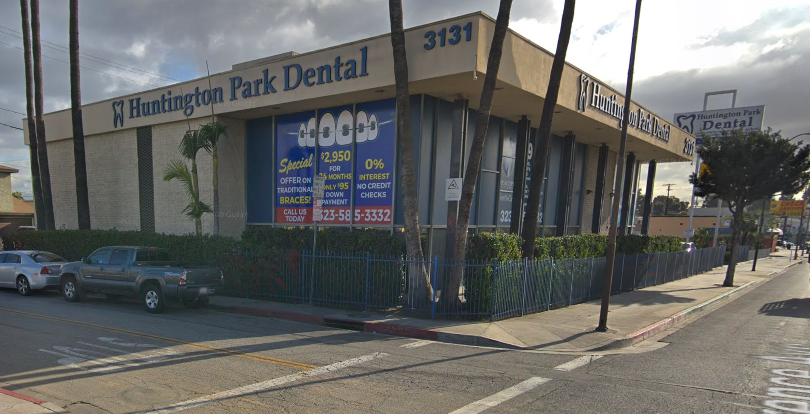What We Do Best – Over $150M in property insured!
-

402 E San Bernardino Rd Covina, CA 91723 (Lessor Risk) -

300 E Bennett Ave Glendora CA 91741 (Habitational) -

3131 E Florence Ave, Huntington Park, CA 90255 (Lessor Risk) -

303 W Foothill Blvd, Glendora, CA 91741 (Lessor Risk) -

10671 Civic Center Drive Glendora, CA 91730 (Lessor Risk) -

130 N Citrus Ave, Covina, CA 91723 (Lessor Risk)
Commercial Real Estate Insurance Overview:
When insuring property for commercial real estate owners, it’s important to advise them not to consider the “high level” points associated with one’s particular policy or program.
Often times, owners will be unable to look past total insured limits and the annual premium. Partnering with the right specialist, however, will help investors identify gaps in coverage and ensure the minimization of all risk exposure.
Whether a client owns hundreds of real estate assets or just a few properties, there are many common elements of a property insurance program that should be considered while placing coverage.
Insured Limits and Valuation
In the event of a disastrous claim, most owners seek to be “made whole” by their insurance policy. A policy’s ability to respond in this fashion is not automatic; most property policies will only respond up to preset limits, and will respond according to prearranged valuation methods:
- Replacement Cost: The amount required to replace damaged property completely, using new materials and furnishings.
- Actual Cash Value: Generally the Replacement Cost of insured property, with a deduction for depreciation (in other words, the age of property factors into the claim adjustment process).
Clearly, Replacement Cost is superior to ACV in most cases. The bottom line is, there is a big difference in the way claims are handled between the two methods. Accordingly, they are both worthy of consideration.
Coinsurance
Occasionally, property owners will be tempted to assume some of the risk in order to reduce their annual premiums. When agreeing to a coinsurance clause (most are either 80% or 90%), a property insurer is stating that if the total insured limit is not at least a certain percentage of the true Replacement Cost at the time of a partial claim, then the property owner would be penalized by ratios representing the percentage by which the property is underinsured. Oftentimes, coinsurance clauses can be negotiated out of policies in exchange for a signed “statement of values,” or other evidence of insurance to value.
Deductibles
Most property insurance policies will pay out subject to a deductible, for which the policyholder is responsible. This seems straightforward, however it is important to note that deductibles may vary depending on the peril insured against. For example, a property insurance policy could have different deductibles for each of the following different perils:
- “All Peril,” or standard causes of loss like fire, water damage, etc.
- Earthquake
- Flood
- Equipment Breakdown
- Business Interruption
- Wind/Hail/Named Storm/Hurricane
- Per-Unit Deductible (for condo buildings, for example)
- Ice Dam or Water Damage Deductible
It’s very important to make sure that all deductibles are clear when placing coverage – it is not uncommon for certain deductibles to be less obvious than others when reading a policy document.
Sub-Limited or Excluded Areas of Coverage
Property insurance must be specifically tailored by an experienced insurance professional knowledgeable about the client’s business. The following is a non-exhaustive list of exposures that may or may not be automatically included within a standard commercial property insurance policy unless specifically addressed:
- Equipment Breakdown coverage
- Business Income/Business Interruption/Extra Expense Coverage
- Ordinance or Law Coverage (Loss to Undamaged Portion, Demolition Costs, Increased Cost of Construction due to Code)
- Water/Sewer Backup
- Earthquake
- Flood (or other naturally occurring water damage)
- Business Personal Property (qualifying items owned by the business but not attached to the structure)
- Production machinery or owned equipment
- Leasehold Improvements
- Property of Others in your care/custody/control
In short, while annual premium is certainly an important factor when placing insurance coverage for commercial property, there are many other factors that must be addressed to ensure that coverage responds favorably in the event of a loss. A good insurance broker will not only negotiate rates with underwriters but they will know how to properly customize coverage based off the property’s value and total exposure.
About OAK Insurance Solutions
Oak Insurance Solutions is a California-based insurance agency specializing in comprehensive protection plans that are strategically tailored to fit the needs of any business or individual. We do this through product knowledge, profitability, years of experience, and value-added services across all enterprises.
At our core is client satisfaction. We believe in treating our clients with respect and faith. We continue to grow through creativity, invention and value-innovation while integrating honesty, integrity and business ethics into all aspects of our daily business functioning and corporate culture.
We’ve created this culture by engaging with our clients on a personal level to understand what is most important to them. We’ve distilled their feedback into key performance indicators with metrics and measures in place to help increase visibility, agency focus, and improve the overall client engagement and experience. We pride ourselves in resolving issues quickly, while proactively searching to find more desirable solutions to the main points at issue.
A true leader in the insurance industry and neighboring communities located in Glendora, CA.



